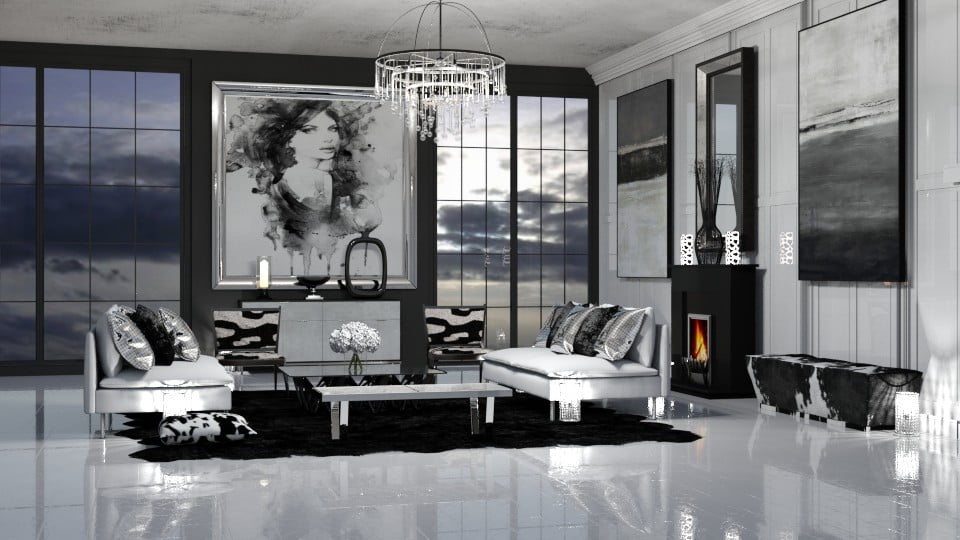We welcome you to contemporary houses where sleek lines meet modern sophistication and timeless elegance. If you have ever been captivated by these architectural marvels’ clean aesthetics and innovative designs, then this definitive guide is for you. Contemporary houses are a reflection of our ever-evolving society, blending form with function to create spaces that are not only visually striking but also highly practical. Whether you’re an aspiring homeowner looking for inspiration or fascinated by the evolution of design, join us as we delve into the essence of contemporary houses.
Characteristics of a Contemporary House
One key characteristic of contemporary houses is large windows, allowing plenty of natural light to flood. This creates a bright and airy atmosphere and blurs the boundaries between indoor and outdoor spaces. These houses often have open floor plans promoting fluid movement throughout different areas. Another notable feature of contemporary homes is their integration with nature. Using sustainable materials such as bamboo or recycled wood adds an eco-friendly touch and brings elements from the surrounding environment inside. In terms of interior design, contemporary houses prioritize simplicity and minimalism. Furniture pieces are usually clean-lined and devoid of excessive ornamentation. Neutral colors like white, gray, or beige dominate the palette, creating a calming ambiance.
The Evolution of Contemporary Design
Contemporary design has come a long way from its inception, constantly evolving and adapting to the ever-changing world. It is fascinating to see how this architectural style has transformed over time. In the early days, contemporary design was characterized by its clean lines, open spaces, and minimalistic approach. However, as society progressed and technology advanced, so did the contemporary design concept. Contemporary houses are not just about simplicity; they have become a blend of modern innovation and timeless elegance. Architects now incorporate sustainable materials into their designs, creating environmentally friendly and energy-efficient homes.
Popular Materials and Features in Contemporary Houses
Contemporary houses are known for their sleek and minimalist design, incorporating popular materials and features. One of the most commonly used materials in contemporary houses is Glass. Its transparency allows natural light to flood the space, creating an open and airy atmosphere. Glass also offers stunning views of the surroundings. Another popular material found in contemporary houses is concrete. Its clean lines and industrial aesthetic bring a modern touch to any home. Concrete can be used for floors, walls, or countertops, adding durability and versatility to the design.
Pros and Cons of Owning a Contemporary House
One major advantage of owning a contemporary house is the abundant natural light filling the space. Large windows, glass walls, and skylights are common features in these homes, allowing for an airy and bright atmosphere. This creates a visually appealing environment and reduces the need for artificial lighting during daylight hours. Another benefit is the flexibility that contemporary houses offer regarding interior design. The clean lines and minimalist aesthetic make incorporating various styles and color schemes into your decor easy. Whether you prefer a modern or traditional look, your contemporary house can adapt to suit your taste. Contemporary houses often embrace sustainable design principles such as green building materials and energy-efficient appliances. This helps reduce your carbon footprint and lowers utility bills in the long run.
Tips for Decorating and Furnishing a Contemporary House
The key is simplicity, emphasizing clean lines and minimalistic design. Here are some tips to help you achieve that modern aesthetic in your home. Choose furniture pieces that have sleek designs and smooth surfaces. Look for furnishings made from materials like Glass, metal, or leather, as they add a touch of sophistication to the space. Avoid bulky or ornate furniture that can clutter the room and disrupt its sleek appearance. For the color palette, stick to neutral tones such as white, gray, or beige for the walls. These colors provide a blank canvas to showcase vibrant artwork or colorful accessories. Add pops of color through accent pillows, rugs, or statement art pieces.
Shopping List for Mediterranean House Designs
Here is a shopping list to help you bring that Mediterranean charm into your own home:
1. Furniture: Look for pieces with intricate detailing and rich finishes, such as dark wood or wrought iron. Incorporate elements like mosaic patterns and ceramic tiles for an authentic touch.
2. Colors: Opt for warm earth tones like terracotta, sandy beige, deep blues, and vibrant greens to infuse your space with the colors of the Mediterranean landscape.
3. Textiles: Embrace natural fabrics like linen and cotton in light, breezy textures. Layering rugs made from jute or sisal can add depth while maintaining a rustic feel.
4. Décor accents: Bring in decorative items like hand-painted ceramics, ornate mirrors framed in aged metalwork, colorful glassware, and lush potted plants to create an inviting ambiance reminiscent of coastal living.
5. Lighting fixtures: Choose fixtures that evoke old-world charm – think lantern-style pendant lights or wall sconces adorned with intricate details.





